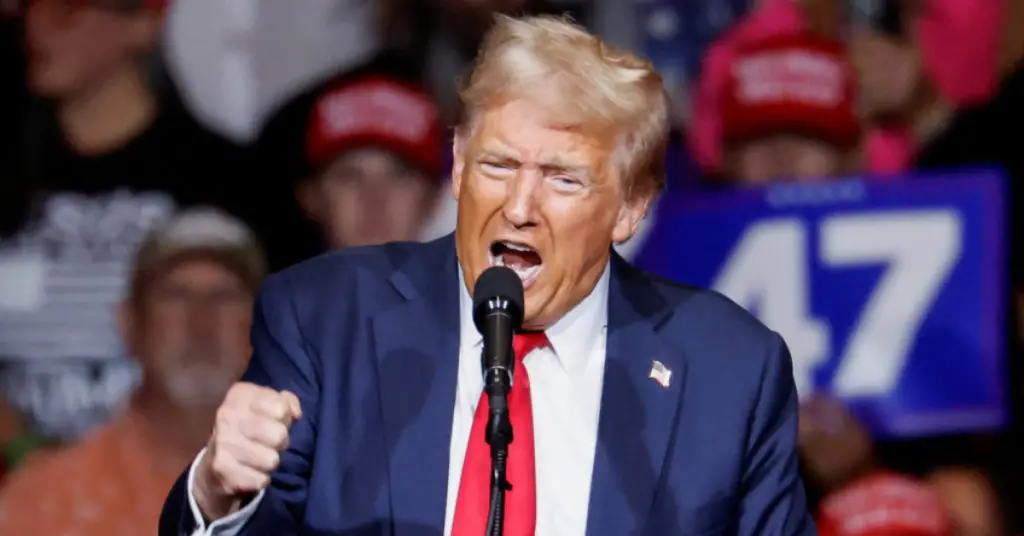Donald Trump’s 1987 book, in an attempt to understand the thinking behind his tariff strategies. This book, which is part memoir and part business advice, shares insights into Trump’s life, career, and the way he approaches business deals. While I’m not an economist, I found several important lessons in the book that seem to be directly connected to his recent moves with tariffs. These lessons highlight his bold, high-risk approach to business, which is evident in his dealings with global trade.
One key lesson from the book is Trump’s mindset of “aiming high.” In The Art of the Deal, Trump talks about his approach to business negotiations. He explains that his strategy is simple: “I aim very high, and then I just keep pushing and pushing to get what I’m after.”
This has played out in his approach to tariffs. For example, when Trump initially imposed tariffs on the European Union, the tax rate was set at 20%, which was higher than what many expected. Similarly, when tariffs were set on Vietnam, they were as high as 46%. This aggressive stance reflects Trump’s business philosophy, where he sets a high bar for what he wants and then continues to push for it, even if it means facing resistance.
Trump’s stance on China has been the most significant demonstration of this philosophy. In recent months, he has imposed a 145% tariff on Chinese goods after China retaliated with its own tariffs on U.S. products. The 145% tariff is the result of a back-and-forth exchange that highlights his relentless pursuit of high targets. While the risks of such a dramatic move are clear, Trump’s strategy in this case is to keep “pushing and pushing,” never backing down, even if it means high economic costs in the short term.
Another striking element of the book is Trump’s dismissal of traditional business advice, especially from “number-crunchers.” In The Art of the Deal, he mentions that he prefers not to listen to conventional wisdom and instead relies on his instincts and bold actions.
This disregard for traditional economic caution is clear in his tariff decisions. He has often ignored the advice of economists and instead focused on making big, high-impact moves. Trump’s approach to tariffs has been unconventional, as he usually imposes significant taxes on foreign goods without the typical consideration of long-term economic consequences that traditional economists might emphasize.
In one section of the book, Trump writes, “I still hope you won’t follow my advice…because that would just make it a much tougher world for me.” This statement highlights his competitive nature and his willingness to make the world harder for his competitors.
This mindset is evident in his tariff policies. By raising tariffs on foreign imports, particularly on countries like China, Trump is not only aiming to get better trade deals for the U.S. but also trying to create a more challenging environment for other countries to operate in. This kind of thinking has driven many of his decisions and reflects his belief that sometimes the best way to get what you want is to make things difficult for others.
Another key takeaway from The Art of the Deal is Trump’s belief in physical goods as being key to a successful business deal. He often talks about how important tangible assets and products are in his ventures, from real estate deals to consumer goods.

This focus on physical goods aligns with his trade policy today, where he prioritizes making deals that benefit the physical economy, like manufacturing and goods production. In his view, the U.S. economy is strongest when it has a strong physical manufacturing base, and his tariffs are a way to push for the protection and growth of that sector.
Despite the often controversial nature of his tariffs, Trump has made it clear that he is willing to take bold risks to get what he wants. In the book, he acknowledges that taking risks is an essential part of his business strategy. He writes about the importance of making big moves, even when they might not always work out as planned.
In the case of tariffs, this attitude is evident in the way he’s raised taxes on foreign goods without much concern for how it might negatively affect U.S. consumers in the short term. Trump’s focus seems to be on achieving long-term goals, such as bringing jobs back to the U.S. and reducing trade imbalances, even if it means causing immediate disruptions.
Trump’s willingness to take risks is also seen in the way he has approached international negotiations. Whether it’s his tough stance on China or his trade talks with the European Union, Trump has never been afraid to take a hardline approach. In The Art of the Deal, he mentions how it’s crucial to take risks and be willing to walk away from a deal if it’s not going in the right direction. This attitude has guided his tariff strategy, as he has often been willing to walk away from negotiations if the terms are not favorable enough for the U.S.
One more important lesson from the book is Trump’s belief in the power of leverage. Throughout The Art of the Deal, Trump talks about how leverage is a key part of any successful negotiation. He stresses the importance of having something the other side wants or needs, and he uses that leverage to get the best deal possible.
In his tariff strategy, Trump has leveraged trade deficits and the strength of the U.S. economy to pressure other countries into making concessions. By imposing tariffs, he creates pressure on these countries to negotiate better terms with the U.S., using the threat of further economic pain as leverage.
The Art of the Deal offers a valuable lens through which to understand Donald Trump’s tariff policies. His strategies, as outlined in the book, show that he is willing to take bold risks, aim high, and push relentlessly for what he wants, regardless of the traditional advice or economic caution.
Whether in his dealings with China or the European Union, Trump’s approach to tariffs reflects his business mindset, one that values bold action and aggressive negotiation tactics. While the long-term effects of his policies remain uncertain, there’s no doubt that his business philosophy continues to influence his approach to trade and tariffs.
Disclaimer: This article has been meticulously fact-checked by our team to ensure accuracy and uphold transparency. We strive to deliver trustworthy and dependable content to our readers.




